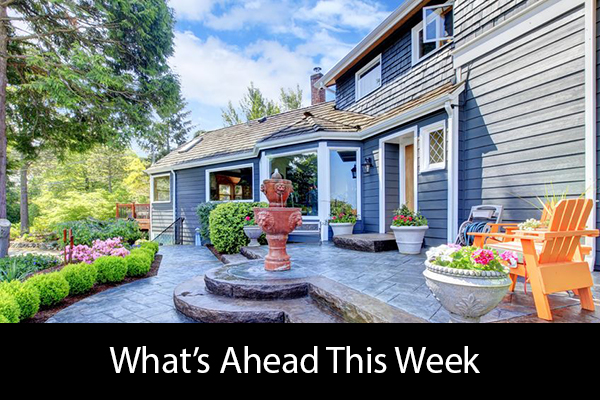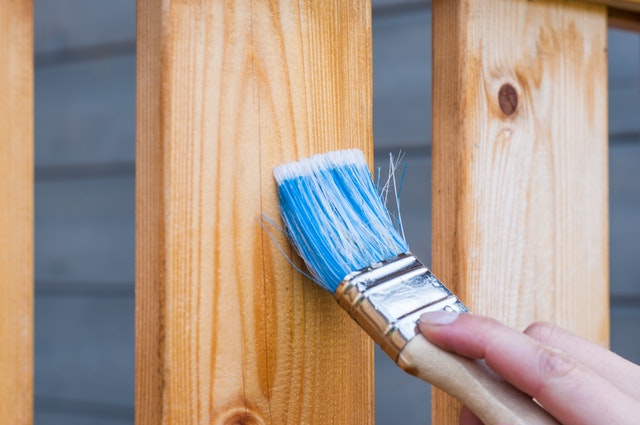 A “seller’s market” happens when there are more potential buyers than homes for sale. In a seller’s market, people looking for a home may feel frustration and not easily find the home that they want. When they find a home for sale that they like, the seller of the home may receive multiple competitive offers at the same moment.
A “seller’s market” happens when there are more potential buyers than homes for sale. In a seller’s market, people looking for a home may feel frustration and not easily find the home that they want. When they find a home for sale that they like, the seller of the home may receive multiple competitive offers at the same moment.
The seller is in an excellent position when this happens. Sellers can pick from the purchase offers to choose the one they like the most. Even if an offer is the same as another one, sometimes it is not the offer chosen by a seller.
Causes Of A Seller’s Market
Seller’s markets arise because a particular area is very desirable. There can also be limitations that do not allow any further development of residential properties in an area. Well-established neighborhoods in up-scale market areas are typically likely candidates for becoming a seller’s market. Easy credit financing is another contributing factor.
Check the median sales price as a percentage of the listing price for an area. If it is greater than 100%, this is a seller’s market.
Buying A Home In A Seller’s Market
If you must live in a certain area, and there are extremely compelling reasons for buying a home in a seller’s market, then expect to pay more and work harder to get the type of home that you want. Here are some tips about how to buy a home in a seller’s market:
1. Work With A Top Real Estate Professional: You want to go into this challenge along with the best professional help that you can find. You want to choose a top real estate agent that specializes in the market area that you desire. They should know the neighborhood intimately and represented both buyers and sellers in that market.
2. Pre-Approved Credit Commitment: Apply for mortgage approval before looking for a home to buy. Request more than the amounted needed and pay for a written loan commitment that guarantees the financing is both approved and legally-committed for the time, plus a little more, that you need to find a home to buy.
3. Move Fast: Make a purchase offer as quickly as possible when a new home listing comes up that meets your criteria.
4. Cash Earn Money Deposit: Offer the seller earnest money in cash that is a significant amount to accept the purchase price you offer. By cash, we mean physical dollar bills of around $5,000 or more. Cash makes people sign a deal.
5. Offer More Money: If you want a specific home, make your purchase offer 1% or more than the asking price. Also, offer in writing to match any other competing offers plus a bit more. You may get into a bidding war and have to pay much more to get the home.
6. Off-Market Properties: Seek to buy a property that is not yet for sale. Ask your agent to call people who they sold a home to before. Ask everyone in the local area if they know of one that is like the one you want. Knock on doors of homes that are one you might like to buy and ask the owner if they will sell the home.
Summary
To get the home you want, try to be flexible with the basic criteria of what type of home it is. Work with a great real estate agent. Move fast and use our tips to be competitive with other potential homebuyers.
 Last week’s economic reports included readings on construction spending and multiple labor sector reports including private and public sector jobs and the national unemployment rate. Weekly reports on average mortgage rates and first-time jobless claims were also released.
Last week’s economic reports included readings on construction spending and multiple labor sector reports including private and public sector jobs and the national unemployment rate. Weekly reports on average mortgage rates and first-time jobless claims were also released. There are a lot of steps that people need to take when buying a home. One of the most common issues that people discuss is the down payment. Most banks will require a down payment so that they aren’t the only ones taking on the risk of buying a home. The common question people have is how much of a down payment they should apply.
There are a lot of steps that people need to take when buying a home. One of the most common issues that people discuss is the down payment. Most banks will require a down payment so that they aren’t the only ones taking on the risk of buying a home. The common question people have is how much of a down payment they should apply. When considering buying a home in an “as-is” condition, the buyer takes all the risk of anything needed to bring the property back up to current building codes and make it ready for occupation or re-sale. There can be bargains in as-is properties if you know how to hunt for one.
When considering buying a home in an “as-is” condition, the buyer takes all the risk of anything needed to bring the property back up to current building codes and make it ready for occupation or re-sale. There can be bargains in as-is properties if you know how to hunt for one.  Case-Shiller’s National Home Price Index showed 3.20 percent national home price growth in September, which was 0.10 percent higher than August’s reading of 3.10 percent. The 20-City Home Price Index showed the continued impact of exorbitant home prices on both coasts as home price growth slowed in high-cost areas and smaller markets experienced upward pressure on home prices as home buyers were seeking affordable homes.
Case-Shiller’s National Home Price Index showed 3.20 percent national home price growth in September, which was 0.10 percent higher than August’s reading of 3.10 percent. The 20-City Home Price Index showed the continued impact of exorbitant home prices on both coasts as home price growth slowed in high-cost areas and smaller markets experienced upward pressure on home prices as home buyers were seeking affordable homes. Those who are looking at buying a home need to think about whether or not they are truly ready for this responsibility. When someone takes out a mortgage, this is frequently the largest loan someone will ever apply for in their life. Furthermore, owning a home also means homeowners insurance, real estate taxes, home maintenance, and home repairs.
Those who are looking at buying a home need to think about whether or not they are truly ready for this responsibility. When someone takes out a mortgage, this is frequently the largest loan someone will ever apply for in their life. Furthermore, owning a home also means homeowners insurance, real estate taxes, home maintenance, and home repairs. Last week’s economic news included readings from Case-Shiller Home Price Indices, readings on new and pending home sales and weekly readings on mortgage rates and new jobless claims. The holiday break on Thursday and Friday curtailed some economic reports.
Last week’s economic news included readings from Case-Shiller Home Price Indices, readings on new and pending home sales and weekly readings on mortgage rates and new jobless claims. The holiday break on Thursday and Friday curtailed some economic reports. Owning a home comes with a lot of responsibilities. One of these involves home maintenance. Sometimes, people are surprised by the size and frequency of home maintenance costs.
Owning a home comes with a lot of responsibilities. One of these involves home maintenance. Sometimes, people are surprised by the size and frequency of home maintenance costs. It is important for everyone to put money in a position to make money in order to make financial dreams come true. One of the common targets that people circle is real estate investing.
It is important for everyone to put money in a position to make money in order to make financial dreams come true. One of the common targets that people circle is real estate investing. There has been a surge in families who have multiple generations living together. In many cultures, children take care of their parents as they age. This is done in an effort to repay the parents for raising them during their childhood.
There has been a surge in families who have multiple generations living together. In many cultures, children take care of their parents as they age. This is done in an effort to repay the parents for raising them during their childhood.